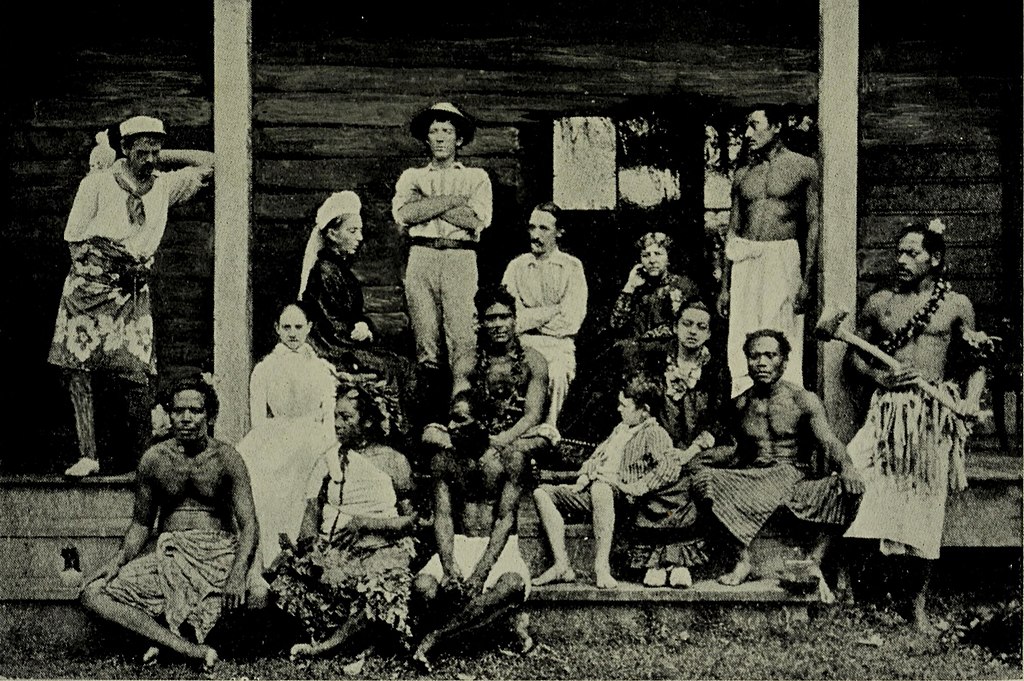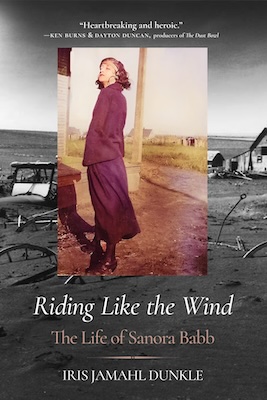Whether we like it or not, literary history tends to follow a known path. In high school, we read The Grapes of Wrath by John Steinbeck, and we are told this is the definitive book about The Dust Bowl. In college, we are introduced to T.S. Eliot’s long poem “The Waste Land” and told that this work is an example of high modernism. But what if I told you that The Grapes of Wrath is not a Dust Bowl novel after all and that “The Waste Land” is actually a confessional poem about T.S. Eliot’s long-lost muse, Emily Hale? The books in the following list challenge the reception of well-known figures in literary history like Steinbeck, Eliot, Sylvia Plath, and Robert Lewis Stevenson and, in some cases, add in new historical literary figures who have nearly been erased.
Although assigned The Grapes of Wrath in high school, the difference for me was that my family had come over from Oklahoma to California during the Dust Bowl, so this book really struck me. After I read it, I rushed home to call my grandmother to tell her about it. But my grandmother wasn’t impressed. Instead, she told me Steinbeck got it all wrong. I was confused by her reaction. Why was she so upset about this great author’s work? My teacher told me it was a classic. I had no idea how right my grandmother’s reaction was.
When I first stumbled upon and read Sanora Babb’s novel Whose Names Are Unknown, written in the late 1930s while she was volunteering with the Farm Security Administration, which built resettlement camps for Dust Bowl refugees, I was overwhelmed with emotion. Babb’s was a story that humanized the experiences of those who had suffered through the worst natural disaster the United States had ever faced thus far, a version where we got to know the characters before the worst days of their lives, when they had to flee to California to find work. Here was a book that told a version of the Dust Bowl story that aligned with the one my grandmother had told me. So, why were we reading The Grapes of Wrath in high school and not Babb’s book? Turns out it’s because Steinbeck borrowed and appropriated material from Babb’s notes, and because of this, her book, which was under contract with Random House at the time, was dropped by the publisher and wasn’t released until she was on her deathbed in 2004. When I finished reading Whose Names Are Unknown, I was fascinated with Babb and knew that she had to be my next biographical subject. And now, five years later, my biography about Babb, Riding Like the Wind: The Life of Sanora Babb will hopefully set this record straight.
My biography aims to correct the record by returning to the archives with the intent of writing Sanora Babb’s name back into the canon that has forgotten her. The life of Sanora Babb teaches us something about how to better understand the story of American Literature. Hers is the story of a strong woman who was not deterred by those who wished to tell her story for her, or by those who would not let her tell her own story. From an impoverished childhood living in a dugout farming broomcorn in eastern Colorado to trying to pursue a life as a writer in California during the Depression, Babb’s story relates to her on-the-ground reportage of the Dust Bowl. Later, Babb was in a writing group with Ray Bradbury for over forty years and had an intimate relationship with Ralph Ellison. She defied “miscegenation” laws in California and lived with the cinematographer James Wong Howe until they could legally marry, and she was blacklisted by the House Un-American Activities Committee during the McCarthy Era. She wrote two novels, a memoir, poetry, and short story collections, and published her work in national magazines like Saturday Evening Post and Seventeen.
I’m not the only writer who challenges popular literary history to find the truth. In each of the eight books listed below you’ll find a different take on literary history, where you’ll not only see the literary elite you thought you knew differently, but you’ll also discover new figures.
The Hyacinth Girl: T.S. Eliot’s Hidden Muse by Lyndall Gordon
The Silenced Muse: Emily Hale, T. S. Eliot, and the Role of a Lifetime by Sara Fitzgerald
On January 2, 2020, 1,131 sealed letters held at Princeton University Library Special Collections from T.S. Eliot to Emily Hale were finally opened after fifty years. And the two women who wrote these biographies: Lyndall Gordon and Sara Fitzgerald, were waiting at the archive doors. They wanted to be the first to discover who the mysterious Emily Hale was–the woman who inspired T.S. Eliot as he wrote his famous poems. And, Indeed, what we discover in Gordan’s The Hyacinth Girl and Fitzgerald’s The Silenced Muse is that the correspondence Hale saved between Eliot and herself has forever changed the narrative that Eliot so carefully crafted. In these letters, Eliot reveals the confessional nature of his poems. How Hale was the “hyacinth girl” in “The Waste Land” and “a rose of Memory” in the Four Quartets. As Gordan tells us in her introduction, “to read Eliot’s letters to Emily during the thirties and early forties is to enter poems in the making.” In Fizgerald’s carefully crafted biography of Emily Hale, The Silenced Muse she traces the life of this previously unknown woman and brings her back to life.
Loving Sylvia Plath: A Reclamation by Emily Van Duyne
By the time I entered college and grad school, my mostly male professors told me that Slyvia Plath was just a young woman’s poet, as Emily Van Duyne writes in Loving Sylvia Plath, “a phase to pass through and grow out of in order to be taken seriously.” Van Duyne also reminds us how “Plath’s suicide is frequently presented as a capricious choice of a spoiled girl seeking revenge, rather than the culmination of a mental health crisis.” In her critical biography, Van Duyne fearlessly takes on the tired narrative that’s been cemented around Plath’s life and challenges it to include the sexual and physical violence Plath endured while married to Ted Hughes, along with how Hughes managed to control the narrative about Plath for decades after her death. This refreshing narrative takes on the immense task of finding our way back to the person Plath really was.
Love Unknown: The Life and Worlds of Elizabeth Bishop by Thomas Travisano
Thomas Travisano’s biography Love Unknown: The Life and Worlds of Elizabeth Bishop broke the mold found in previous biographies about Bishop, where she was often made out to be the woman who was abandoned (both by her parents and her lovers) and who thereby became an alcoholic. In these works, Bishop’s grief and isolation were cherry-picked and displayed on a pedestal as if she were being picked apart: broken piece by broken piece. She became a muse of sorrow, blazoned. In Travisano’s biography Bishop is given the voice of authority. She isn’t picked apart into tiny fragments. Instead, what emerges through this careful study is the complex life experienced by one of America’s greatest poets.
A Wilder Shore: The Romantic Odyssey of Fanny and Robert Louis Stevenson by Camille Peri
In this new biography about Robert Lewis Stevenson and his wife Fanny Van de Grift by Camille Peri, we get to know the woman who helped shape one of the world’s most beloved writers. We learn that Fanny was a tomboy who after leaving her home Indiana for the Silver mine boom towns in Nevada, traveled to Europe with her daughter and two sons to escape her cheating husband. It was at an artist retreat in France in 1876 that Fanny and Robert first met. A meeting that according to Peri fueled both of their lives and sent the two on adventures around the world. Fanny, who was also a writer, short stories and colorful accounts about their life together, even contributed to helping her husband write the novels he is famous for. It’s about time that someone took on telling the story of this unique, and powerful literary partnership.
Trace of Enayat by Iman Mersal, translated by Robin Moger
A Ghost in the Throat by Doireann Ní Ghríofa
In these two biographies, the form of biography is reinvented so that it can be used to tell the story of two renowned literary figures whose lives had been lost from the archives. Both books not only bring back two lives, but share the nearly impossible journey both writers took in order to recover their stories.
In Traces of Enayat, Mersal takes us with her as she travels to Egypt in search of Enayat al-Zayyat, a brilliant young novelist who took her own life at age 27. In Egypt, Mersal finds that not only does no one know who al-Zayyat is, but those who do know her suppress what they know. What follows is a harrowing journey into al-Zayyat’s hidden life.
In A Ghost in the Throat, Ní Ghríofa recovers the life of the 18th-century noblewoman, Eibhlín Dubh Ní Chonaill, whose story was preserved through the poem she wrote about her husband’s murder, “The Keen for Art O Laoghaire.” Ní Ghríofa wraps this biography in her autobiography, describing her archival journey in trying to find the poet’s life between her busy life as a mother. By sharing the difficult journeys they both took, Mersal and Ní Ghríofa not only bring these forgotten writers back to life but they also show us the difficulties one faces when one tries to recover what has been lost.
The True History of Mrs. Meredith and Other Lesser Lives by Diane Johnson
This final selection is the OG of revolutionary biographical form. “We have stopped, or we have pretended to stop, the flow of time, and all the lesser lives with which we are here concerned are collected for the introduction.” So begins Johnson’s 1972 biography where she breaks the form of biography in order to tell the story of Mary Ellen Peacock Nicolls Meredith whose life had been overshadowed by the life of her famous husband, the Victorian writer, George Meredith. Johnson found Meredith’s letters tucked in Vera and Cliff Whiting’s house, letters that helped her unlock the life of the mysterious woman who was the model for George Meredith’s Diana of the Crossways. A woman who had been written off as an adultress, a woman who “got what she deserved” when she died young and alone a few years later. Johnson begins her biography at her vision of what Meredith’s lonely funeral would have been like, and at it she gives Meredith agency, even in ghost form, to lead us toward the story of her life.
Read the original article here

